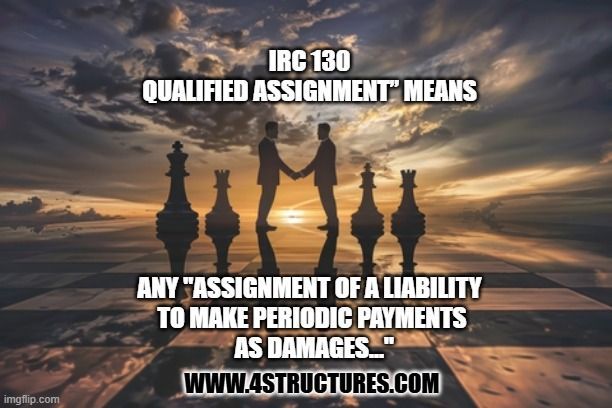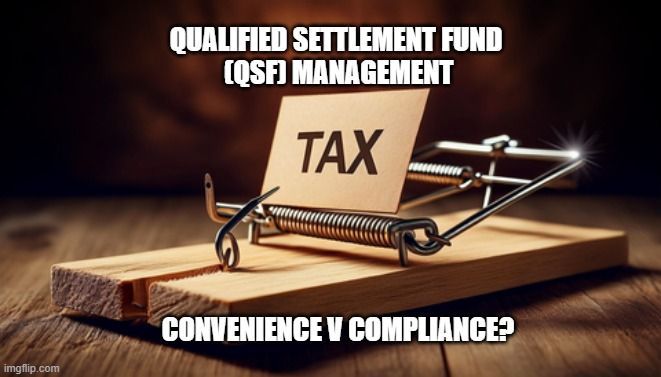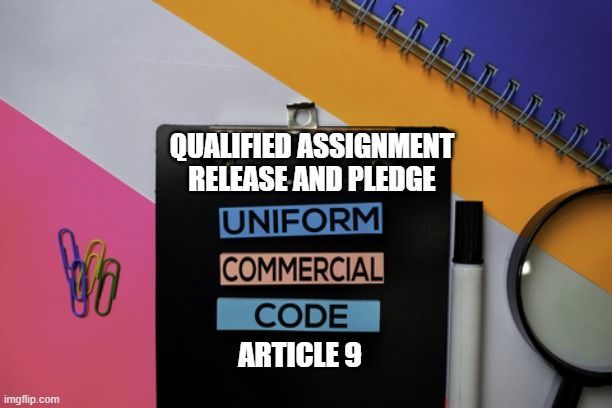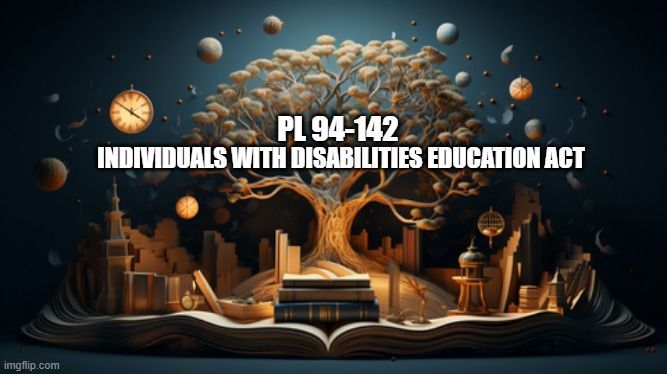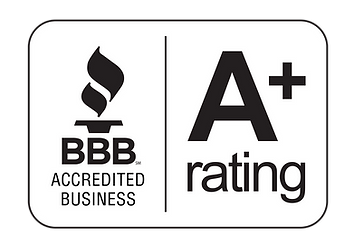Structured Settlements Meet NY Surrogate Judges and Pink Floyd
"You Can't Have Any Pudding If You Don't Read Your Mede"
Mede and Potatoes | "Just Another Brick In The Wall"
In the Matter of Yolette Mede decided in 1998 in Kings County Surrogate Court, a petition to place a minor's share into a Halpern Group 130X post settlement trust, mislabeled a structuredsettlement (essentially for marketing purposes of the vendor) ,was denied andunfortunately created bad law relied upon by the Kings County Surrogate
http://caselaw.findlaw.com/ny-surrogates-court/1251293.html . The
Mede Court appeared to recognize what a real structure was butstill issued the decision with the inaccurately labeled trust. Other Surrogates have relied on Mede in denying structured settlements that extended beyond the age of 18, often to the detriment of the minors.
But to paraphrase the lyrics of Pink Floyd,
" You Cant Have any Pudding if You Don't Read Your
Mede". (177 Misc.2d 974, 980 [1998])”.
http://www.leagle.com/decision/20036342Misc3d632_1551
Highlighted excerpts from Mede case decision
The decedent, Yolette Mede, died on September 5, 1991 at age 29as a result of alleged medical malpractice. The decedent left surviving thepetitioner, her spouse, and three infant children, the youngest having been bornjust prior to decedent's death. The action was settled before a Justice ofthe New York Supreme Court, County of Kings, during jury selection for $2,100,000.00. The petitioner andthe attorneys are to receive immediate lump-sum payments while the father seeksto invest the children's shares in a new type of structured settlement plan.
It is this investment vehicle or
“plaintiff-controlled structured settlement trust”
which concerns the Court and requires further discussion.
(emphasis added )
If you read through the Mede case, you will see that the Mede court expressly recognized how structured settlements are supposed to work.
To wit..."·The commonly used structured settlement is a written obligation by a defendant (usually through its insurance company) tomake deferred payment of monies over a prescribed period of time. Thedefendant's obligations are fixed as to the amount and the time of futurepayments upon entering into the structured settlement agreement. Most structured settlements are financed by the defendant through their purchase ofan annuity insurance policy. As an indicia of reliability, a rating reportpublished by A.M. Best Co. evaluates life insurance companies. Their ratingsare often utilized by the courts as a guide to evaluating whether a particularlife insurance company is an appropriate choice to finance a selectedstructured settlement annuity
The Court has been advised that the father,
by choosing this investment product , had several financial goals in mind. Firstly, he sought to preventthe dissipation of his children's funds by placing the monies into irrevocable trusts until each child reaches the age of 35. Secondly, he wanted to invest the funds in a fashion which would take advantage of changing and possibly rising interest rates during the term of the investment period. Finally, hesought to avoid the temptation presented by the recent emergence of after-market annuity purchasing companies, which offer discounted, butimmediate cash payments in exchange for the termination of an annuity-basedstructured settlement
.
________________________________________________
IMPORTANT NOTE: The Estate of Yolette Mede decision was made before the enactment of the Victims of Terrorism Tax Relief Act of 2001, effective January 2002 and the enactment of the New York Structured Settlement Protection Act NY GOL 5-1706
§ 5-1706. Approval of transfers of structured settlementpayment rights. No direct or indirect transfer of structured settlement paymentrights shall be effective and no structured settlement obligor or annuityissuer shall be required to make any payment directly or indirectly to anytransferee of structured settlement payment rights unless the transfer hasbeen authorized in advance in a final order of a court of competentjurisdiction based upon express findings by such court that:
(a) the transfer complies with the requirements of thistitle;
(b) the transfer is in the best interest of the payee,taking into account the welfare and support of the payee’s dependents; andwhether the transaction, including the discount rate used to determine thegross advance amount and the fees and expenses used to determine the netadvance amount, are fair and reasonable. Provided the court makes the findingsas outlined in this subdivision, there is no requirement for the court to findthat an applicant is suffering from a hardship to approve the transfer ofstructured settlement payments under this subdivision;
(c) the payee has been advised in writing by the transfereeto seek independent professional advice regarding the transfer and has eitherreceived such advice or knowingly waived such advice in writing;
(d) the transfer does not contravene any applicable statuteor the order of any court or other government authority; and
(e) is written in plain language and in compliance withsection 5-1702 of this article]
_________________________________________________________________________________________________________________
Back to Mede
“A proposal whereby the petitioner shall create a structuredpayout of the shares allocated to the decedent's infant children isspecifically not approved in the form currently presented to the Court (emphasis added). Pendingsubmission of an alternative plan, the children's settlement funds shall beheld in a guardianship account under joint control with the Clerk of the Courtand the settlement of the petitioner's accounting shall be held inabeyance” (Look familiar?)
“ Undeniably, the ordinary structured settlement approvedby the court always delays a child's receipt offunds beyond his or her majority . However, such settlementsare approved as the means for settling a civil litigation with an understandingthat such are the terms upon which a defendant is conditioning the settlement . Here, the defendants are paying the entire settlement sum up front to thefather who then invests the funds in a structured settlement instrument {again mislabeled]. Therefore, this case presents an issue concerning thepropriety of the investment strategy chosen by the father, rather than asettlement proposal and accordingly, it must be judged by a different standard .
Then came Estate of Carucci Nassau County Surrogate 2003 which cited Matter of Mede “Moreover, the court "cannot permit arestriction of access to . . . proceeds after an infant has reached the age of18" (Matter of Mede, 177 Misc.2d 974, 980 [1998])”. http://www.leagle.com/decision/20036342Misc3d632_1551
Estate of Castro [Kings Surrogate 332/A/2008] Brought Good News
The Surrogate cited to Estate of Carucci in denying theinfant distributes annuities on October 9, 2012. On appeal to modify March7, 2013, it reversed itself stating:
“Based on the record presented by counsel in open court onMarch 7, 2013
that annuities are a condition of settlement
,
andwere pre-funded at the time of settlement
, and having thoroughlyreviewed counsel’s motion to modify the court’s decision dated October 9, 2012,the motion is granted. Accordingly the petitioner’s request for approval topurchase the annuities for the four infant distributees is approved”. The result was preservation of six figures in payment advantage from the pre-funding.
Here are some key excerpts from mysworn affidavit of February 4, 2013, which accompanied the appeal to modify:
(1) Atall relevant times the Defendant’s insurance company retained its ownstructured settlement consultant through which it dictated terms thatwere a condition of settlement . For example, one of the terms was that the structure had be locked-in by its broker. Furthermore theexecuted commission sharing agreement between the Defendant’s and Plaintiff’sagents underscores that a structured settlement was part of the negotiation.[“A structured settlement will arise out of the settlement of this suit on the matter”]. The Court will also note the fax footprint ofthe annuity issuer which appears on the document.
(2) Agreeingto the Defendant’s insurer’s conditions was necessary and critical t o theplaintiffs’ settlement planning, taking into account (i) a declininginterest rate environment; (ii) the underwriting criteria of structured annuityissuers with respect to rate lock-ins; and (iii) the inability to predictthe length of time that the Surrogate would take to review approve the settlement, to protect the minor payees as well as (names redacted) and get them toagree to pre-fund the structured settlements in advance of Court approval.
(3) Asstated in my March 31, 2009 affidavit, the structuredsettlements were pre-funded by the insurer for the Defendants topreserve a favorable rate.
(4) Pre-fundinga structured settlement is not a legal obligation of any Defendant orInsurer .
(5) Pre-fundingthe structured settlements means that upon Surrogate approval the payees’ rateof return is “vested” at the rate that existed on the date the annuities werelocked in and subsequently pre-funded
(6) Shouldany of the children have liquidity needs at, and after, the age ofmajority they may, pursuant to the conditions of the New York StructuredSettlement Protection Act [New York General Obligations Law §5-1706], seekCourt approval to sell or transfer their rights to receive all or a portion ofthe structured settlement payments
Two Prong Test
Clearly the Kings County Surrogate has set a precedent fortwo prong test for approval of a structure paying beyond age 18 : (1)structure a condition of settlement (2) pre-funding of the structuredsettlement.
Bold Claims Adjuster at Medical Malpractice Insurer to The Rescue
In 2014, the Nassau Country Surrogate County judge indicated that that he would deny a request to structure proceeds of a minor in a wrongful death medical malpractice case, citing Mede and Carucci and expressing reservations about factoring. Our co-broker, who represented the plaintiff, asked us to obtain a refund of the structure money. Give my prior experience on this subject, an offer was made to help our industry colleague get the case through.
Plaintiff's adviser refused despite (1) their client's desire for a structure (2) the co-broker had recommended a structured settlement (3) the lawyer's interest in a structured settlement.
So instead a goodwill effort was made to convey the information about the two prong test to plaintiff's counsel. Not long thereafter, the Nassau County Surrogate issued a decision approving the structured settlement for the minor. Had our team not made this extra effort, the child would not have a structure, would not get much interest in the bank, would have had more spendthrift risk than if she had a structure at 18+ and would have had more difficulty getting financial aid under FAFSA or CSS Profile standards with so much in her bank account at age 18. Resources of the child are counted at 20% or 25% toward Expected Family Contribution, depending on the specific financial aid form and program. We even preserved the plaintiff adviser's share of the fee.
Collaboration Effort Required
Structured settlements are an important settlement planning tool for minors who have lost a parent . It is important to note that success in implementing structured settlements such cases in New York, which require Surrogate approval, is the result of a collaborative effort to meet the two prong test.
#MatterofYoletteMede
#KingsCountySurrogate
#structuredsettlementskingscountywrongfuldeath
#wrongfuldeathstructuredsettlements
Last updated May 2, 2024
I

